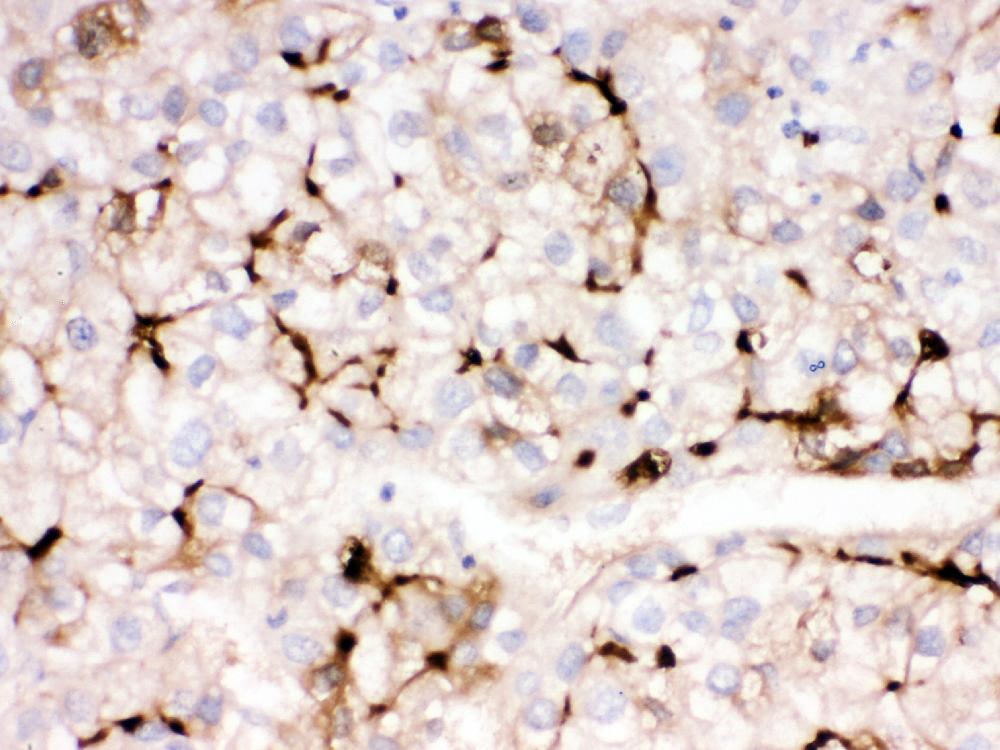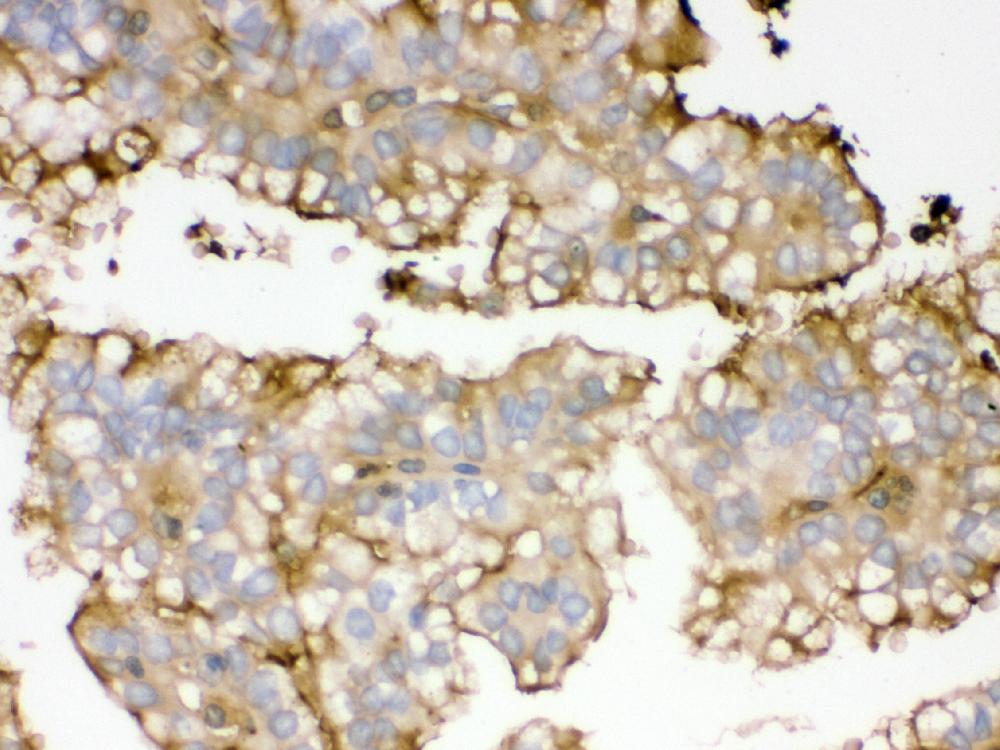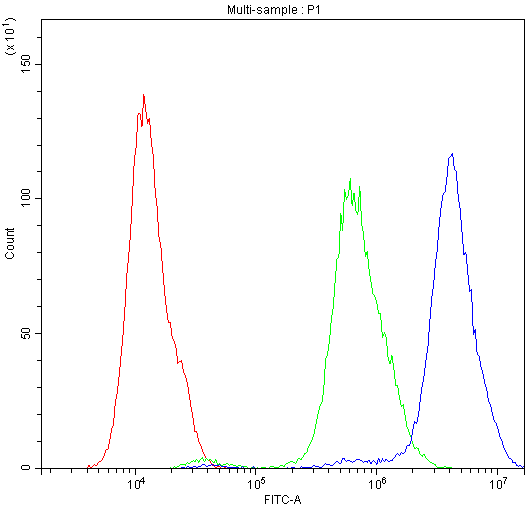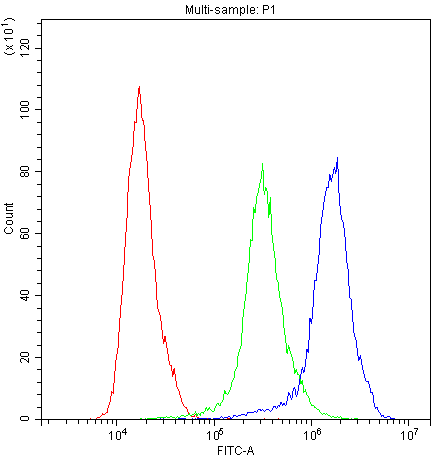| Western blot (WB): | 1:500-2000 |
| Immunohistochemistry (IHC): | 1:50-400 |
| Flow Cytometry (Fixed): | 1:50-200 |
| Enzyme linked immunosorbent assay (ELISA): | 1:100-1000 |
| (Boiling the paraffin sections in 10mM citrate buffer,pH6.0,or PH8.0 EDTA repair liquid for 20 mins is required for the staining of formalin/paraffin sections.) Optimal working dilutions must be determined by end user. | |

Figure 1. Western blot analysis of Apolipoprotein A I expression in human placenta extract (lane 1). Apolipoprotein A I at 26KD was detected using rabbit anti- Apolipoprotein A I Antigen Affinity purified polyclonal antibody (Catalog # PB9916) at 0.5 μg/mL. The blot was developed using chemiluminescence (ECL) method (Catalog # EK1002).

Figure 2. Apolipoprotein A I was detected in paraffin-embedded sections of human liver cancer tissues using rabbit anti- Apolipoprotein A I Antigen Affinity purified polyclonal antibody (Catalog # PB9916) at 1 μg/mL. The immunohistochemical section was developed using SABC method (Catalog # SA1022).

Figure 3. Apolipoprotein A I was detected in paraffin-embedded sections of human renal cancer tissues using rabbit anti- Apolipoprotein A I Antigen Affinity purified polyclonal antibody (Catalog # PB9916) at 1 μg/mL. The immunohistochemical section was developed using SABC method (Catalog # SA1022).

Figure 4. Flow Cytometry analysis of CACO-2 cells using anti-APOA1 antibody (PB9916).Overlay histogram showing CACO-2 cells stained with PB9916 (Blue line).The cells were blocked with 10% normal goat serum. And then incubated with rabbit anti-APOA1 Antibody (PB9916, 1:100) for 30 min at 20°C. DyLight®488 conjugated goat anti-rabbit IgG (BA1127, 1:100) was used as secondary antibody for 30 minutes at 20°C. Isotype control antibody (Green line) was rabbit IgG (1:100) used under the same conditions. Unlabelled sample (Red line) was also used as a control.

Figure 5. Flow Cytometry analysis of HepG2 cells using anti-APOA1 antibody (PB9916).Overlay histogram showing HepG2 cells stained with PB9916 (Blue line).The cells were blocked with 10% normal goat serum. And then incubated with rabbit anti-APOA1 Antibody (PB9916, 1:100) for 30 min at 20°C. DyLight®488 conjugated goat anti-rabbit IgG (BA1127, 1:100) was used as secondary antibody for 30 minutes at 20°C. Isotype control antibody (Green line) was rabbit IgG (1:100) used under the same conditions. Unlabelled sample (Red line) was also used as a control.

Figure 1. Western blot analysis of Apolipoprotein A I expression in human placenta extract (lane 1). Apolipoprotein A I at 26KD was detected using rabbit anti- Apolipoprotein A I Antigen Affinity purified polyclonal antibody (Catalog # PB9916) at 0.5 μg/mL. The blot was developed using chemiluminescence (ECL) method (Catalog # EK1002).

Figure 2. Apolipoprotein A I was detected in paraffin-embedded sections of human liver cancer tissues using rabbit anti- Apolipoprotein A I Antigen Affinity purified polyclonal antibody (Catalog # PB9916) at 1 μg/mL. The immunohistochemical section was developed using SABC method (Catalog # SA1022).

Figure 3. Apolipoprotein A I was detected in paraffin-embedded sections of human renal cancer tissues using rabbit anti- Apolipoprotein A I Antigen Affinity purified polyclonal antibody (Catalog # PB9916) at 1 μg/mL. The immunohistochemical section was developed using SABC method (Catalog # SA1022).

Figure 4. Flow Cytometry analysis of CACO-2 cells using anti-APOA1 antibody (PB9916).Overlay histogram showing CACO-2 cells stained with PB9916 (Blue line).The cells were blocked with 10% normal goat serum. And then incubated with rabbit anti-APOA1 Antibody (PB9916, 1:100) for 30 min at 20°C. DyLight®488 conjugated goat anti-rabbit IgG (BA1127, 1:100) was used as secondary antibody for 30 minutes at 20°C. Isotype control antibody (Green line) was rabbit IgG (1:100) used under the same conditions. Unlabelled sample (Red line) was also used as a control.

Figure 5. Flow Cytometry analysis of HepG2 cells using anti-APOA1 antibody (PB9916).Overlay histogram showing HepG2 cells stained with PB9916 (Blue line).The cells were blocked with 10% normal goat serum. And then incubated with rabbit anti-APOA1 Antibody (PB9916, 1:100) for 30 min at 20°C. DyLight®488 conjugated goat anti-rabbit IgG (BA1127, 1:100) was used as secondary antibody for 30 minutes at 20°C. Isotype control antibody (Green line) was rabbit IgG (1:100) used under the same conditions. Unlabelled sample (Red line) was also used as a control.






